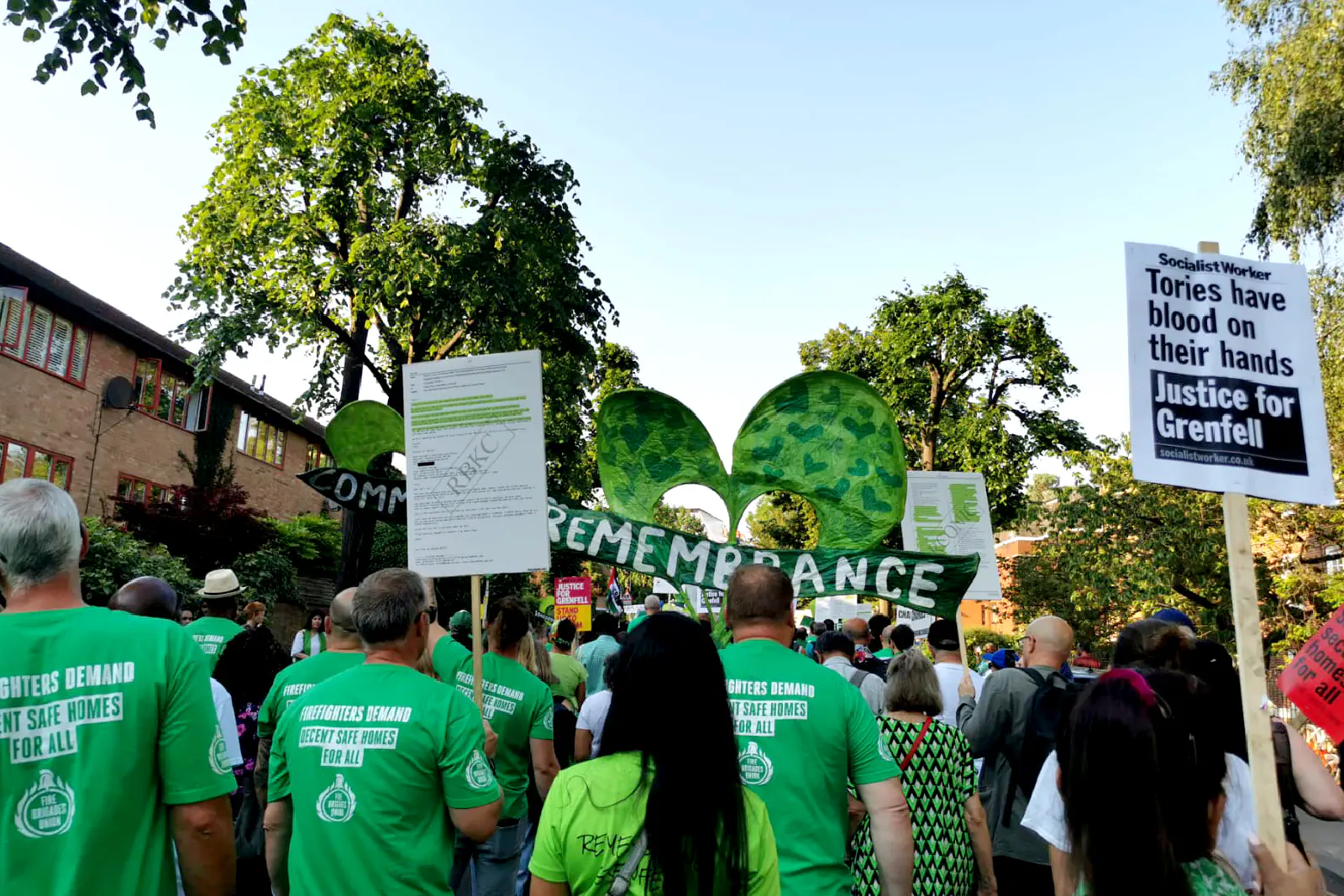
Racist violence in Britain’s housing
Awaab Ishak was a two-year-old boy who in December 2020 died due to a respiratory condition caused by extensive and prolonged exposure to toxic mould in his home in Rochdale’s Freehold Estate. Awaab’s family complained to the housing association Rochdale Boroughwide Housing (RBH), about the mould for years, however, they kept on being ignored and neglected by the RBH. As the coroner’s report revealed, the RBH staff made racist assumptions about the family’s lifestyle, blaming them for the mould in the flat, rather than fixing the real cause behind the problem: the poor ventilation system in the property. The penetrating racism led to institutional neglect and the family was aware of it. After the coroner’s verdict, the family made a call:
“RBH we have a message for you - stop discriminating, stop being racist, stop providing unfair treatment to people coming from abroad who are refugees or asylum seekers, stop housing people in homes you know are unfit for human habitation. We were left feeling absolutely worthless at the hands of RBH”
The family knew very well that being ignored and neglected was not only a result of the inefficiency and cost-cutting of the housing association, but it was a result of systemic state violence towards racialised and working-class residents, who were rendered unworthy of security and safety. Brenna Bhandar urges us to look at the notion of organised abandonment to understand how the state and private bodies have come to abandon their responsibilities towards the residents of social housing and beyond. Years of deregulation and privatisation of every possible site (including social housing) in Britain have led to blurred lines between the state and private contractors. Their legal duties often remain unclear making it possible for them to operate without responsibility and public accountability, while profiting and extracting value. Organised state abandonment relies not only neoliberal economic policies focused on maximum profits but also on racism, hostility towards migrants and classist ideologies, tragically illustrated in the case of the Grenfell Tower fire, in which the majority of the victims were racialised as non-white.
Racism in the housing sector roots back to colonial and postcolonial history in Britain. The well-documented practices in post-war Britain of segregation of migrant communities, redlining, as well as exclusion from social housing but also property ownership, employment and security meant that “the nation and its wealth” was maintained “as a white possession even in the presence of its racialised other.” The continuous discriminatory and racist practices excluded racialised people from the Commonwealth and beyond from Britain’s wealth.
While some racist practices were eliminated or banned, others persisted or were newly introduced, such as the recent Right to Rent (RtR) scheme, introduced under the Immigration Act 2014 and 2016. The scheme, being part of the hostile environment requires all landlords to check the immigration status of their prospective tenants, a practice that led to further discrimination and racism of racialised tenants and revealed landlords’ assumptions about British citizenship.
“It is always the same story”, said Mani, one of the research participants in my study—“when I finally became a refugee, I was evicted from the hotel for asylum seekers. I was looking forward to renting privately, but whenever landlords and real estate agents saw my biometric residence card, they were just not interested in renting to me.” In the end, Mani, like many others in his situation, was forced to rent a room with 7 other people in a flat that was not only overcrowded but also had fire safety problems. “I was scared to complain to the landlord because the other tenants warned me that I might be evicted if I raise any issues with the landlord,” said Mani referring to the no-fault evictions (Section 21 proceedings) in England, a practice which despite the government’s promises was still not banned. Mani’s story highlights also how the RtR scheme further exacerbates the already deregulated private rented sector, with racialised migrants ending up at the bottom-end of the sector.
Britain’s property regime is highly racialised and while not all racialised groups have a singular experience, nevertheless, according to government statistics, in every, socio-economic and age group, white British families are more likely to own a home than all other minoritised ethnic groups combined. Racialised as non—white families are also more likely to experience disrepairs, housing deprivation, overcrowding and homelessness. This exposes them, to draw on Gilmore’s notion of racism, to state—sanctioned harm, risk and premature death. The neglected homes in disrepair or the tower blocks under ‘managed decline’ come to have particular meanings in Britain’s social housing landscape. As Sarah Keenan argues, they mean:
“poor, over-crowded, migrant, socially immobile, working class, racialised, ghetto; and its consequences are government and corporate containment and malicious neglect, particularly as these spaces of poverty become blights on a rapidly gentrifying landscape, bringing down property prices and getting in the way of ‘regeneration’.”
Living in such spaces not only means “a materially lower than average standard of living” but also “an identity that will not be listened to or taken seriously by those in power, even when – as the Grenfell Action Group blog shows us – it is a matter of life and death.”
The Grenfell Action Group raised numerous warnings in the years prior to the fire about the lack of fire safety at Grenfell Tower with the borough of Kensington and Chelsea and The Kensington & Chelsea Tenant Management Organisation. Awaab Ishak’s family continually raised their concerns about the dampness and mould with their landlord, Rochdale Boroughwide Housing. Nevertheless, they continued to be neglected, not listened to, until avoidable tragedies took place, for which no one claimed responsibility.


